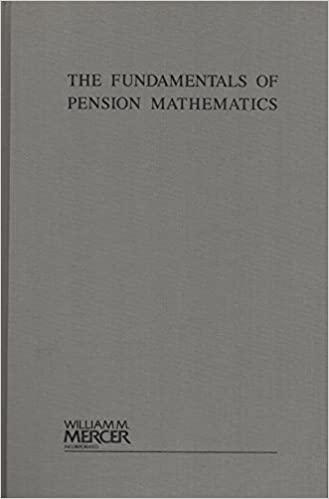The Fundamentals of pension mathematics

Contenido multimedia no disponible por derechos de autor o por acceso restringido. Contacte con la institución para más información.
| Tag | 1 | 2 | Value |
|---|---|---|---|
| LDR | 00000cam a22000004b 4500 | ||
| 001 | MAP20210027826 | ||
| 003 | MAP | ||
| 005 | 20211207211325.0 | ||
| 008 | 210928s1978 usa|||| ||| ||eng d | ||
| 040 | $aMAP$bspa$dMAP | ||
| 084 | $a6 | ||
| 100 | 1 | $0MAPA20210032738$aBerin, Barnet N | |
| 245 | 1 | 4 | $aThe Fundamentals of pension mathematics$cBarnet N. Berin |
| 260 | $aNew York$bSociety of Actuaries$c1978 | ||
| 300 | $a66 p.$c23 cm. | ||
| 500 | $aPertenece a la donación de la biblioteca particular de D. Camilo Pieschacón Velasco | ||
| 520 | $aPension mathematics is an interesting blend of theory and practice. To be competent, to become professional, requires a thorough knowledge of the theory combined with sufficient working ex perience. There have been significant changes in this field over recent years. With high-speed, flexible computers, the pension actuary is able to answer difficult, practical and theoretical questions that could only be approached by approximate methods in the past. In most cases, a series of logical instructions is all that is required to generate re sults that expand the actuary's role as a technical consultant. The pension actuary's knowledge is drawn from his background in preparing for the various related actuarial examinations, from di verse papers on the subject, and from practical experience. It is the purpose of this book to develop the theory and to indicate how this theoretical and practical skill can be applied, recognizing the capa bility of the new computers, and the types of questions asked of the actuary. The concept of a dynamic group will be stressed: an ever-changing group of participants (active, retired, terminated, and so on) that is measured, or valued, at a regular point in time, each year. There will be no need for a stationary population; no need for continuous functions. We will use ä(¹2), since nearly all pension plans provide for monthly payments, at the start of each month. To follow de velopments, a good working knowledge of life contingencies is re quired. Some practical experience is desirable, to avoid confusion over terminology. With a few exceptions, such as Chapter 12, this book approaches the subject from the point of view of a trusteed, noninsured pen | ||
| 650 | 4 | $0MAPA20080549497$aActuarios | |
| 650 | 4 | $0MAPA20080602437$aMatemática del seguro | |
| 650 | 4 | $0MAPA20080552114$aPensiones | |
| 650 | 4 | $0MAPA20080592455$aPlanes de pensiones | |
| 710 | 2 | $0MAPA20080444044$aSociety of Actuaries (United States) | |
| 856 | $yMÁS INFORMACIÓN |

